Freestanding tubs are a symbol of luxury and sophistication. They are definitely a huge investment piece that requires a lot of planning and thoughtful consideration. We’ve come up with this freestanding tub buying guide to help you find the tub of your dreams.
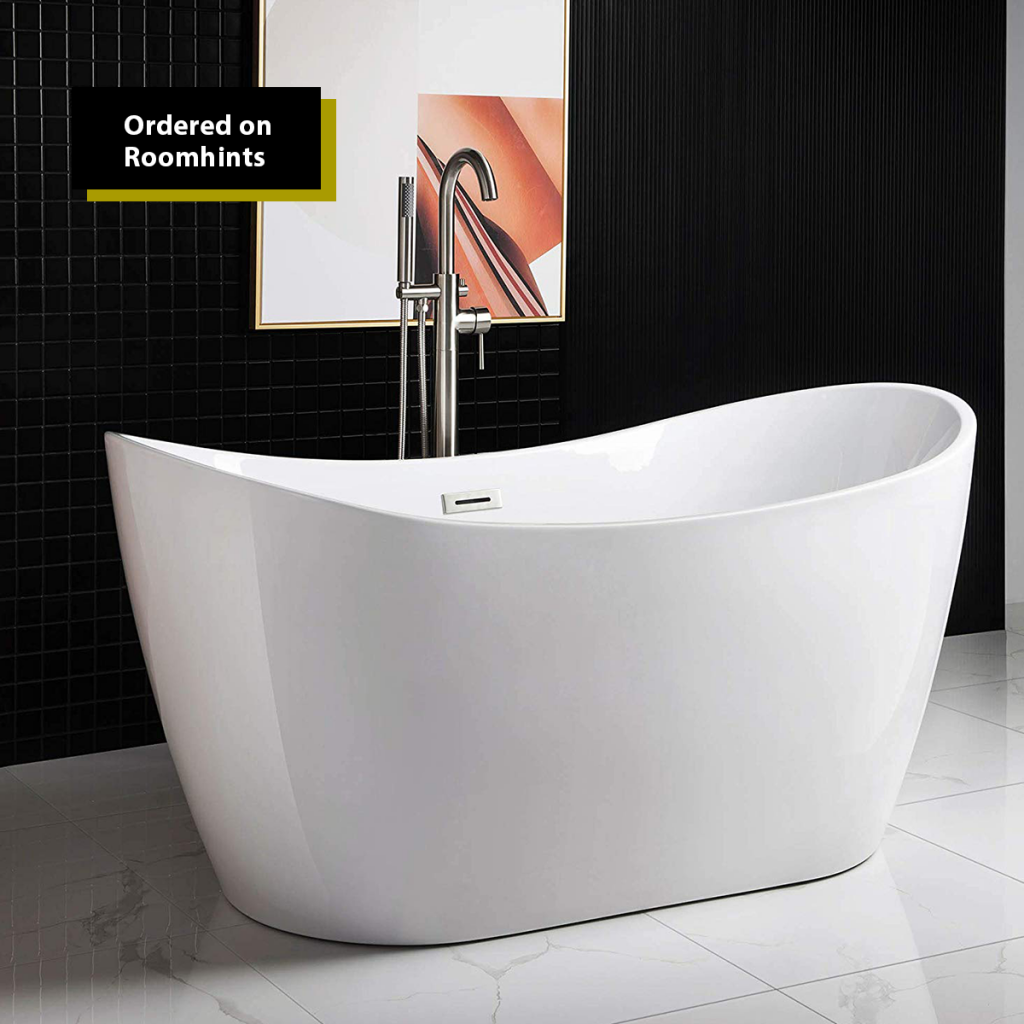
1. Figure out size dimensions
Before you worry about anything else, you need to know what size tub you’re looking for. This will help you narrow down your options and allow you to immediately discount any tub that will simply not fit into your space. Knowing your measurements is particularly important when going with a freestanding tub because they take up and require a lot more space. We recommend at least a foot of space between the wall and the basin on all sides for the best design and functionality.
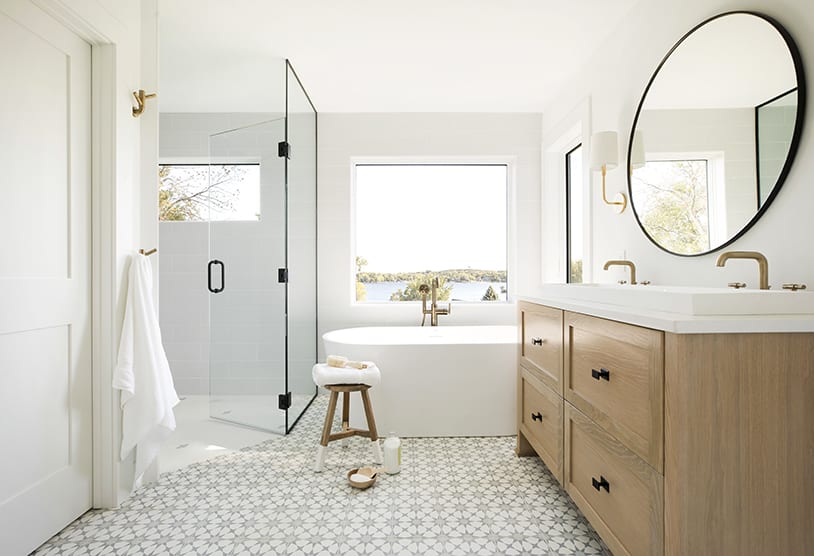
Designed by Bria Hammel Interiors
Love that round mirror, check out our article on round bathroom mirrors.
While freestanding tubs used to be associated with grand homes and luxury living, their immense popularity has meant that they have become more widely available in a variety of styles, sizes, and price points. Now, smaller to medium sized freestanding tubs have become hugely popular because they take up less space (which makes them perfect for smaller, urban homes) and are more practical for daily use.
Freestanding tubs are typically taller than a built in tub so that you can completely immerse yourself in the tub, but that means that it is more difficult to get in and out of, especially for pets, children, the elderly, and anyone with disabilities. Factor in these height considerations when choosing the size of your freestanding tub.
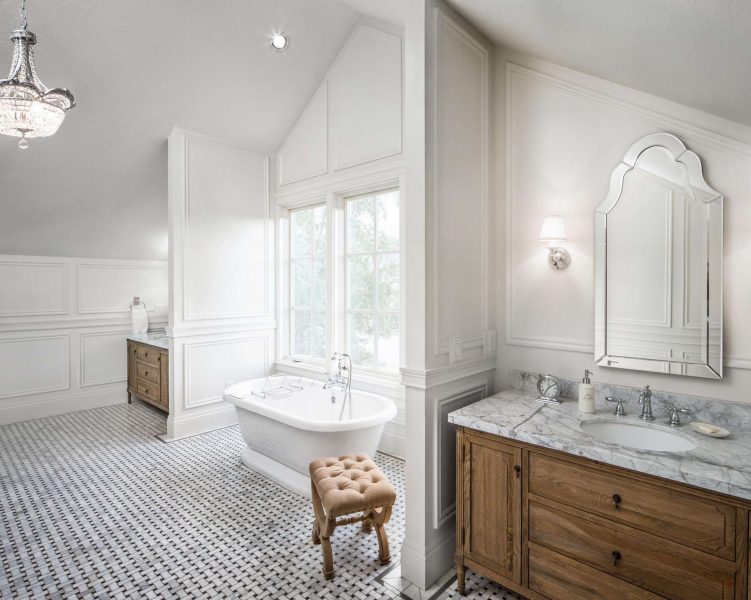
Designed by The Fox Group
ProHINT: Bathtubs come in a variety of sizes and dimensions. If you take baths frequently and want a tub that you can completely lay down in, make sure to find a tub that fits your body. Before committing to a tub, test-drive them in store by actually climbing in and laying down!
2. Choose the tub style
Freestanding tubs come in a lot of different styles, both modern and traditional. Deciding on a tub style will require you to think about both aesthetics and function.
How frequently you plan on using your freestanding tub and the design impact that you want to achieve with it will inform your purchasing decisions.
Freestanding tubs are hailed for their wide array of choices, as opposed to the more design-limited built-in tub. Because they come in so many different styles, you will definitely be able to find one that completes your bathroom remodel.
Here we’ll touch on a few of the most popular styles to help you with your search.
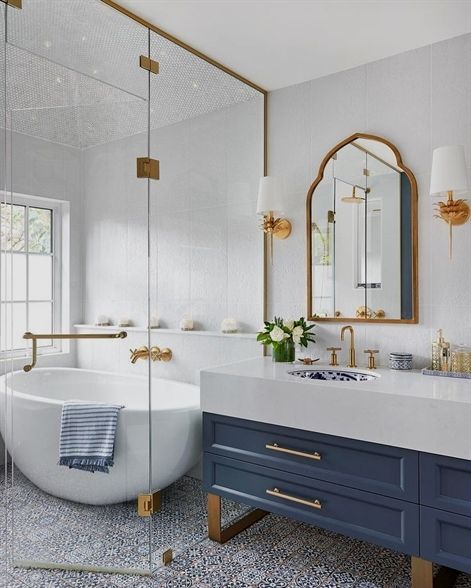
Image Credits: Pinterest
Pedestal: Pedestal tubs sit on a pedestal base.
Slipper: Slipper tubs feature one or two sloping sides to allow people to recline comfortably. A double slipper tub is raised on both sides. A slipper tub is not only more comfortable because of its ergonomic design, it also boasts a distinct design and beautiful shape.
Clawfoot: A clawfoot tub features “feet” that raises the tub off the floor, rather than sitting flush on it.
Roll top: A roll top tub has edges that appear to be “rolled” over for a more comfortable design.
Japanese soaking tub: A Japanese soaking tub is a smaller, yet taller, freestanding tub that is meant more for sitting than laying. They often incorporate seats and are traditionally made of wood. These tubs are great for smaller spaces that still want the luxury of a freestanding tub.
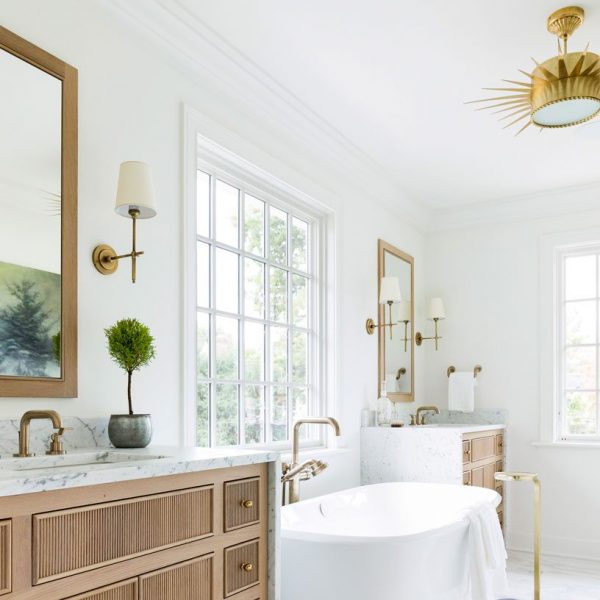
Designed by Bria Hammel Interiors
Choose a Jetted Free Standing Tub
Additionally, you can also choose between a simple soaker tub, a whirlpool tub, or an air tub. A jetted tub will enhance your freestanding tub experience.
Soaker tub: A soaker tub is a standard tub that is deep enough/designed for bathing.
Whirlpool tub: A whirlpool tub features high-pressure air and water jets for a massaging experience.
Air tub: An air tub uses heated air bubbles to give you a gentle massage experience, as opposed to a high-pressure massage.
Combo: A jetted tub with both air and water pressure features gives you the best of both worlds.
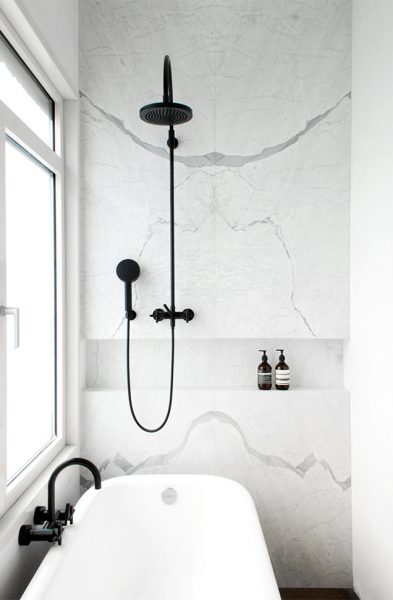
Image Credits: Apartment 34
3. Choose a material
Why is the bathtub material so important?
Something that you need to consider when choosing a freestanding tub is its weight. Freestanding tubs can be very heavy, depending on the material. Some floors may not be able to withstand the weight of a heavy freestanding tub and might need to be reinforced.
For that reason, older homes with a weak structural foundation and upper-level bathrooms may not be able to support a heavy freestanding tub. Consult a plumber or engineer to make sure that your bathroom is suitable for a freestanding tub, or choose a lighter material.
What is the best material for a freestanding tub?
Freestanding tubs come in a wide variety of materials, such as acrylic, fiberglass, cast iron, stainless steel, copper, and stone. Each material has its own advantages and disadvantages. The two most common freestanding tub materials are acrylic, stone resin and cast iron.
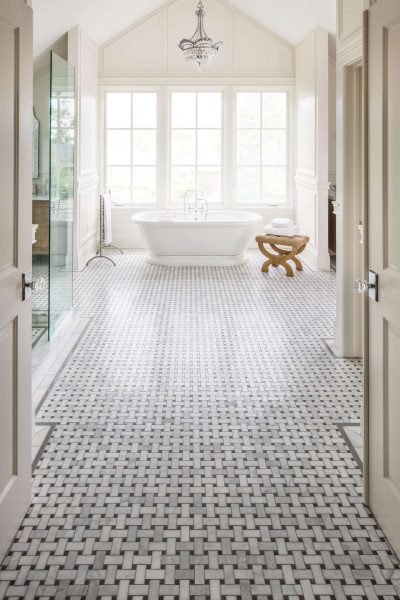
Designed by The Fox Group
Acrylic Freestanding Bathtubs:
Acrylic bathtubs are the most popular choice for freestanding tubs because they are perhaps the best all-around material in terms of durability, versatility, and affordability.
They are strong and lightweight, which makes them easier to carry and install, especially on upper levels. They won’t require floor reinforcements, unlike other heavier materials like cast iron and stone.
Acrylic bathtubs have a smooth, comfortable surface that is perfect for bathing. Because it is non-porous, acrylic is resistant to staining and discoloration; it is also resistant to scratches, although more prone to cracking.
Even so, damages can be fixed relatively easily and affordably as scratches can be buffed out. Because it is highly malleable, it can be molded into many different shapes, which means that acrylic bathtubs are available in many different styles, modern and traditional.
Acrylic freestanding tubs definitely come out on top in terms of maintenance and affordability.

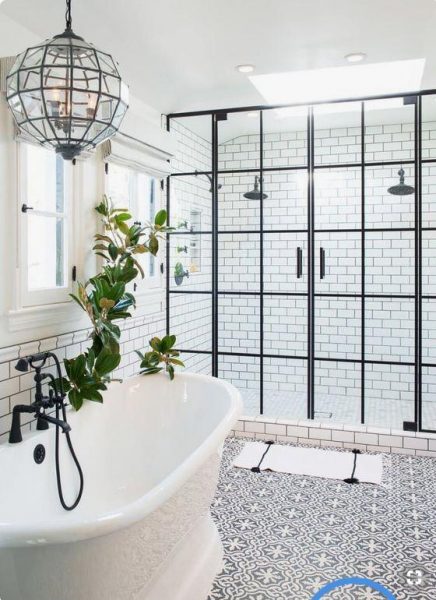
Image Credits: American Bath Factory
Another option is a solid surface material, a composite material typically made of a mix of resin and acrylic. It is a high-quality, low-maintenance material that offers the quality and durability of stone without the weight, although stone resin or solid surface freestanding tubs tend to be pricier.
Stone Resin Tubs:
Stone resin which is an engineered composite consisting of Dutch polyester resin, dry ground marble, and limestone filler blend. The products are manufactured with non-toxic materials that are 100% non-porous, none-leaching, lead-free and therefore unaffected by fluctuating moisture or humidity.
The manufacturing process starts with the interior of the mould being lined with a gloss gel coat. The polyester resin is then mixed with mineral filler blend and color pigments imported from the UK. The blend is cured and heated to improve its heat resistance. It is then injected into a mould and dried. Once the product comes out of the mould it is hand sanded for a matte finish or hand buffed for a glossy finish.
Why Stone Resin Tub vs. Acrylic Tub?
- Stone resin is more durable,
- Easier to clean than acrylic,
- Cost effective,
- Retains heat.
Cast Iron Tubs:
On the other hand, cast iron definitely comes out on top in terms of durability, as their extreme durability means that they will probably last you forever. Cast iron is resistant to scratching, but is expensive to repair if breakage does occur.
Most people are drawn to cast iron tubs for their authentic/vintage, classic, traditional appeal. Cast iron tubs are also great at heat retention.
However, their biggest drawbacks are probably their high price point and their heavy weight. Cast iron tubs are extremely heavy and are therefore not suited for many bathrooms, or require reinforced floors.
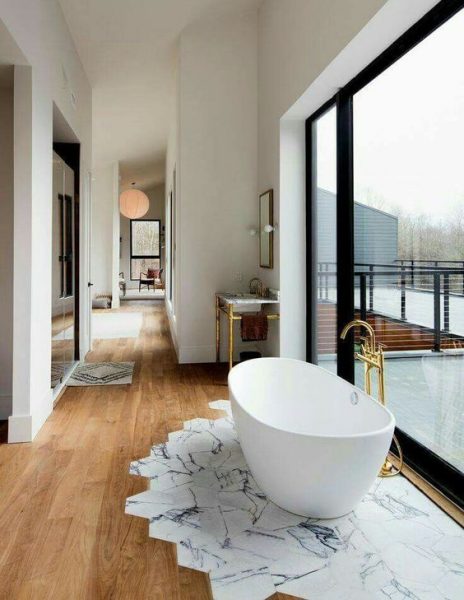
Image Credits: Pinterest
Other, less common freestanding tub materials include stainless steel, copper, wood, and stone. Stainless steel tubs have more of a modern, industrial look and require little maintenance.
Copper, wood, and stone freestanding tubs, on the other hand, are costly, high-maintenance options. However, their heat-retaining properties and undeniable style impact may justify their maintenance costs.
Unlike acrylic, which is non-porous, these materials are not as water resistant, and require more upkeep.
Image Credits: Pinterest
4. Choose a faucet
With freestanding tubs, you have the option between freestanding faucets, deck mounted faucets, and wall mounted faucets. Freestanding faucets stand on the floor adjacent to the basin, deck mounted faucets rest on the basin, and wall mounted faucets hang over the basin on the wall.
Tubs either have pre-drilled holes for deck mounted faucets or can be drilled into to accommodate a faucet. Some materials are not compatible with deck mounted faucets because you cannot drill into the material. A wall mounted faucet requires a little more planning as you need to make sure you place the basin appropriately under the faucet.
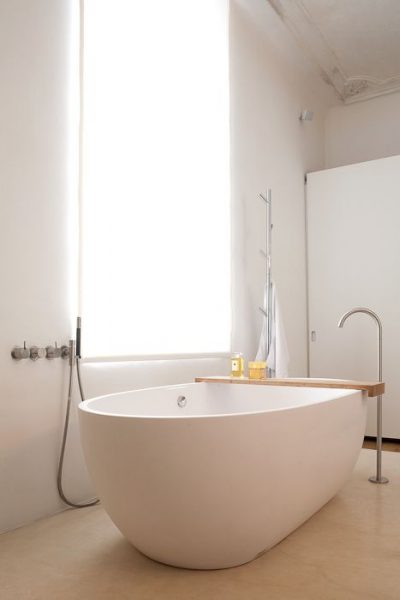
Image Credits: Pinterest
ProHINT: Place your deck mounted faucet in the middle of the basin, as opposed to the end, so that more than one person can comfortably recline on both sides of the tub.
5. Add finishing touches
Once your gorgeous freestanding tub is installed, all that’s left is to add the finishing touches. There are lots of ways to style a freestanding tub so that it truly stands out as a focal point in the room and so that it is functional for day-to-day use. Bathtub caddies are a great way to personalize and customize your freestanding tub.
Designed by Michelle Dokey
Some people opt for a shower with their freestanding tub, which requires a little more planning from the start. Once you have your shower installed, you’ll need to suspend a shower curtain.
Even if you do not have a shower, some people choose to hang a shower curtain for aesthetic purposes, heat retention, or privacy. Although the dreaded shower curtain invokes many unpleasant images, with the right design and furnishings, you can actually incorporate a shower curtain to elevate the design of your freestanding tub, rather than taking away from it.
Pick a beautiful curtain and mount a minimal rod onto the ceiling or wall as unobtrusively as possible for a “canopy bed” effect.
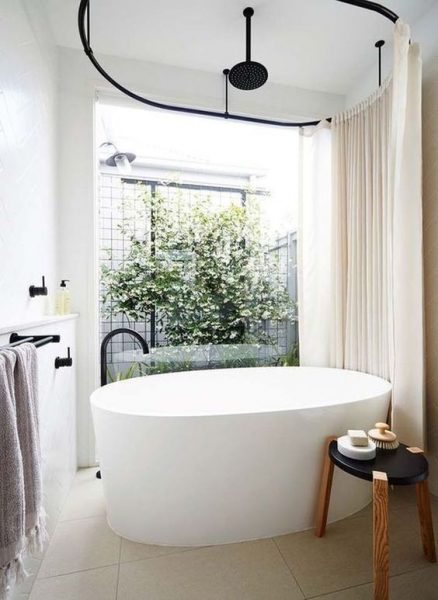
Image Credits: Pinterest
For more bathroom design hints check out our Freestanding vs. Built In Bathtub, Guide: How to Choose a Freestanding Tub, 4 hints for a small bathroom or our stunning pink tile bathroom hints.









